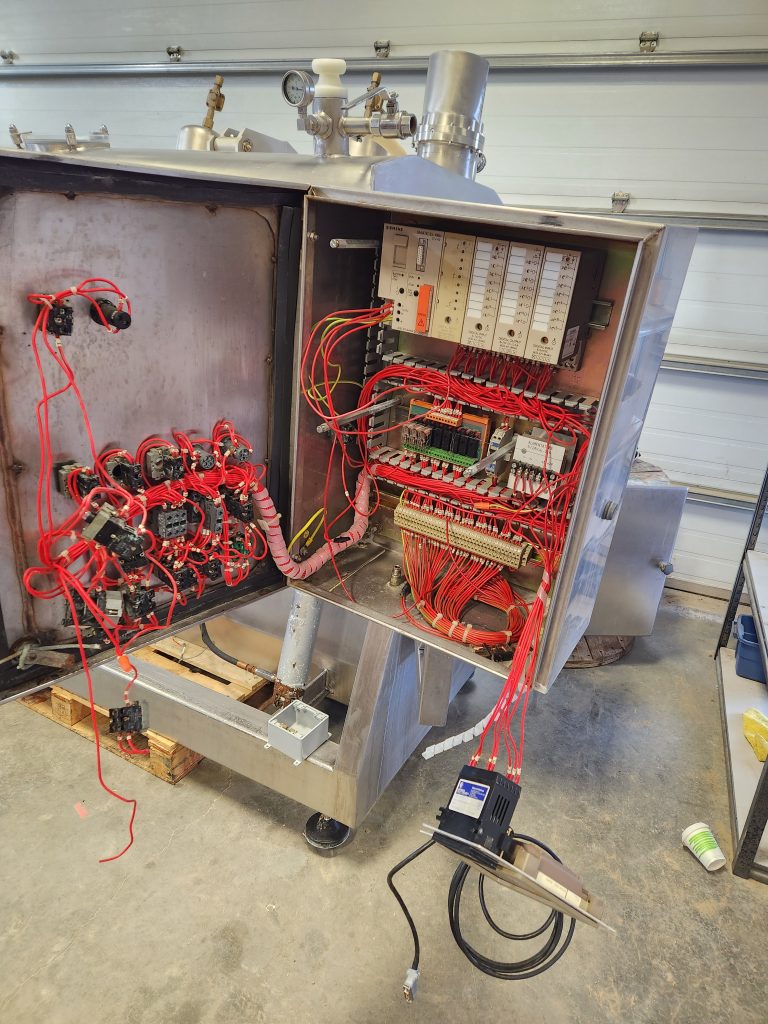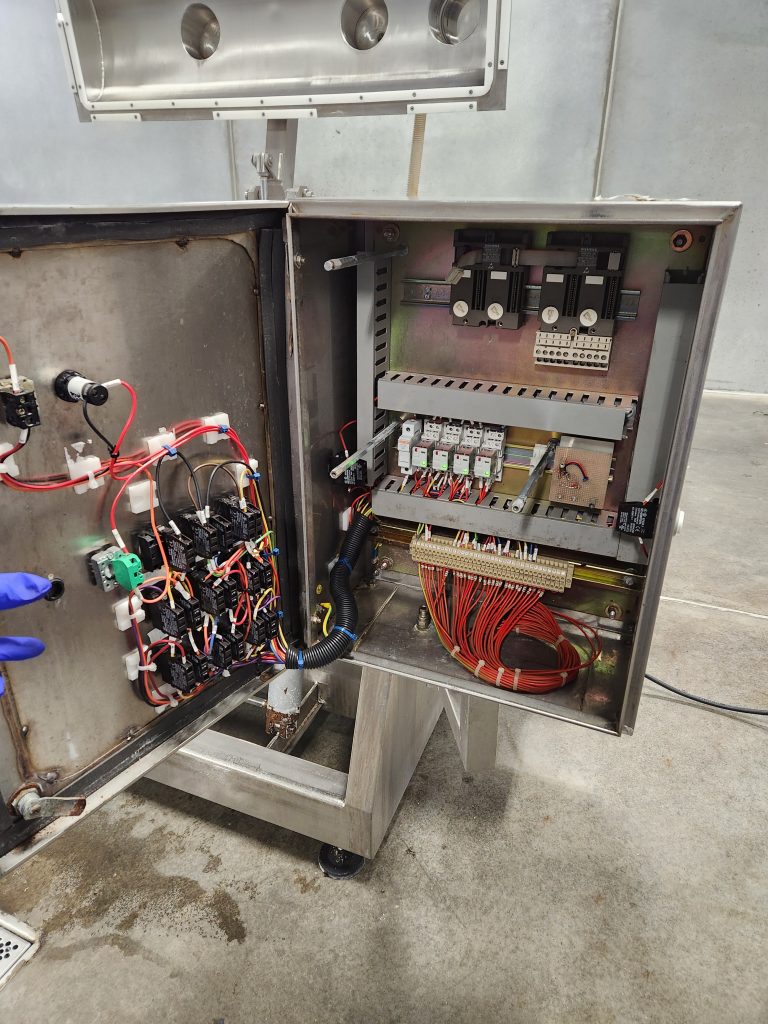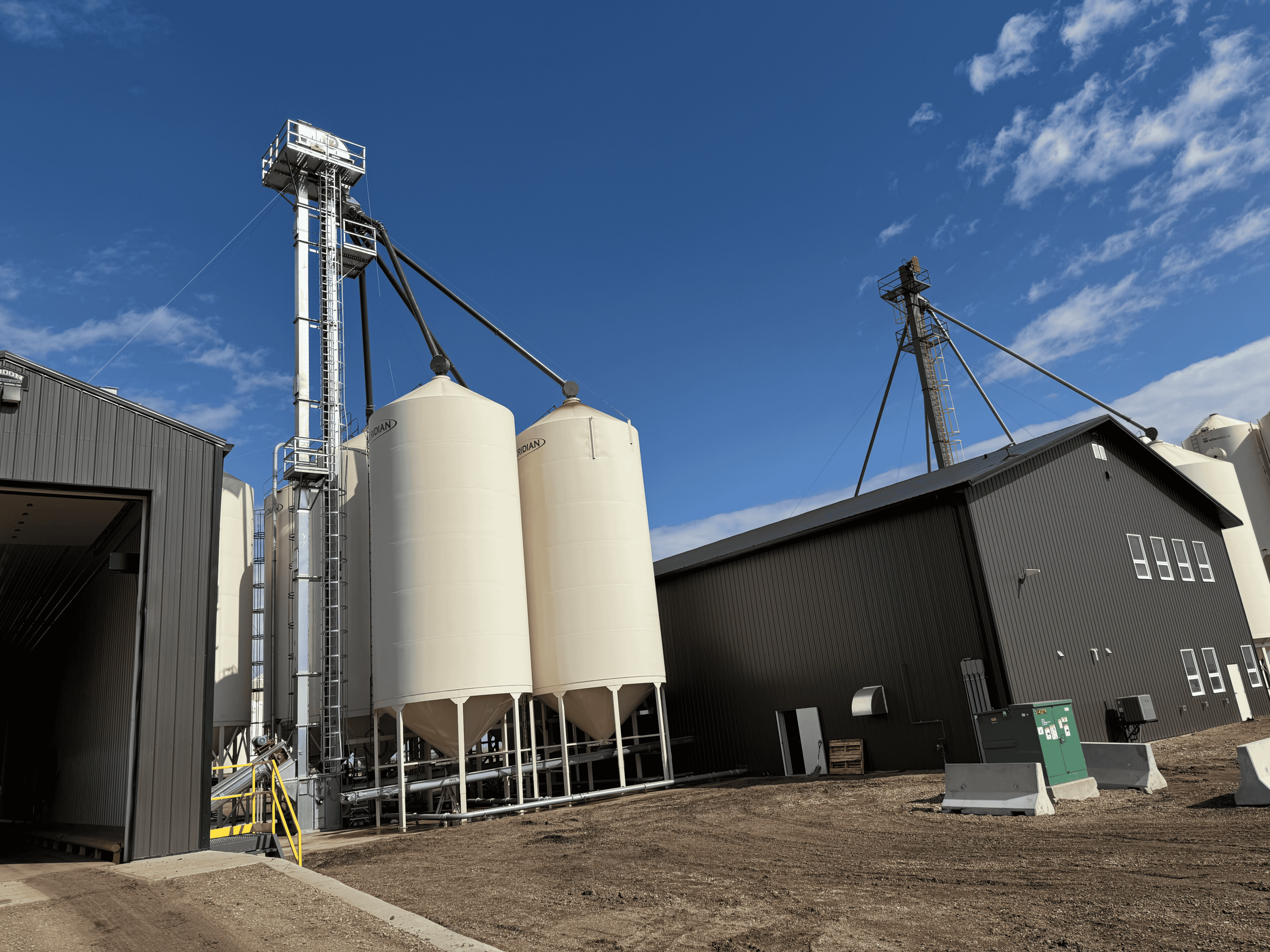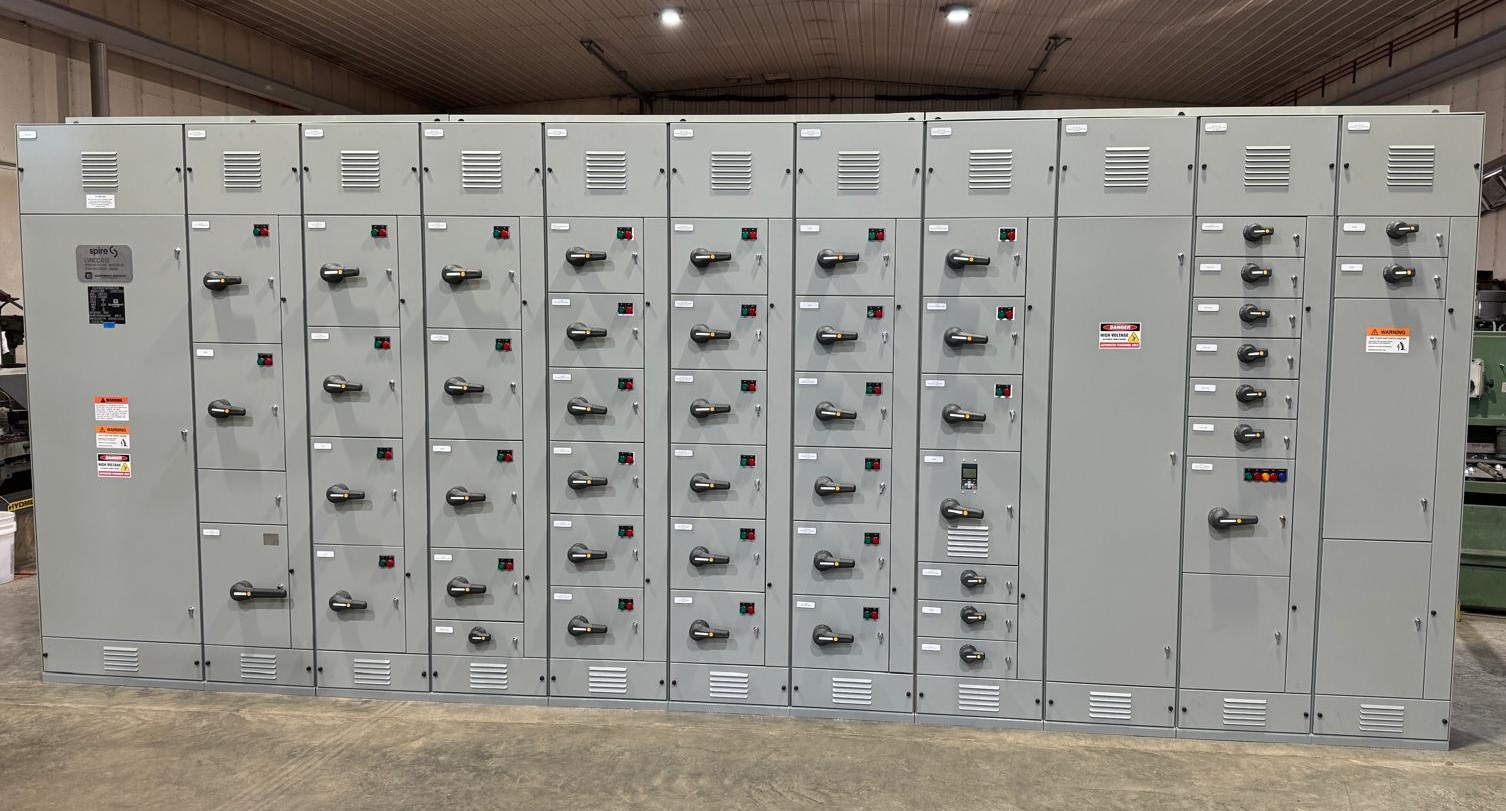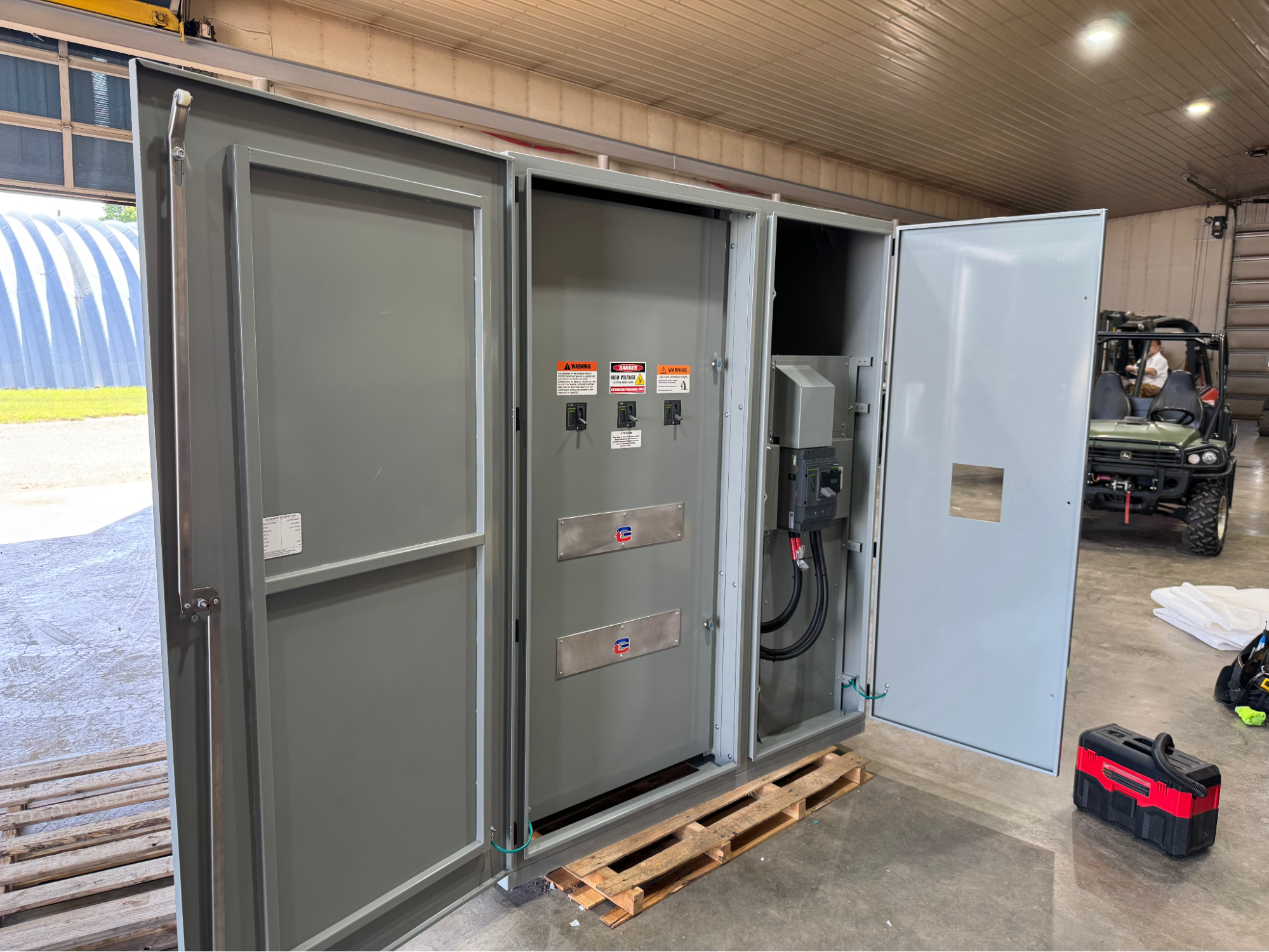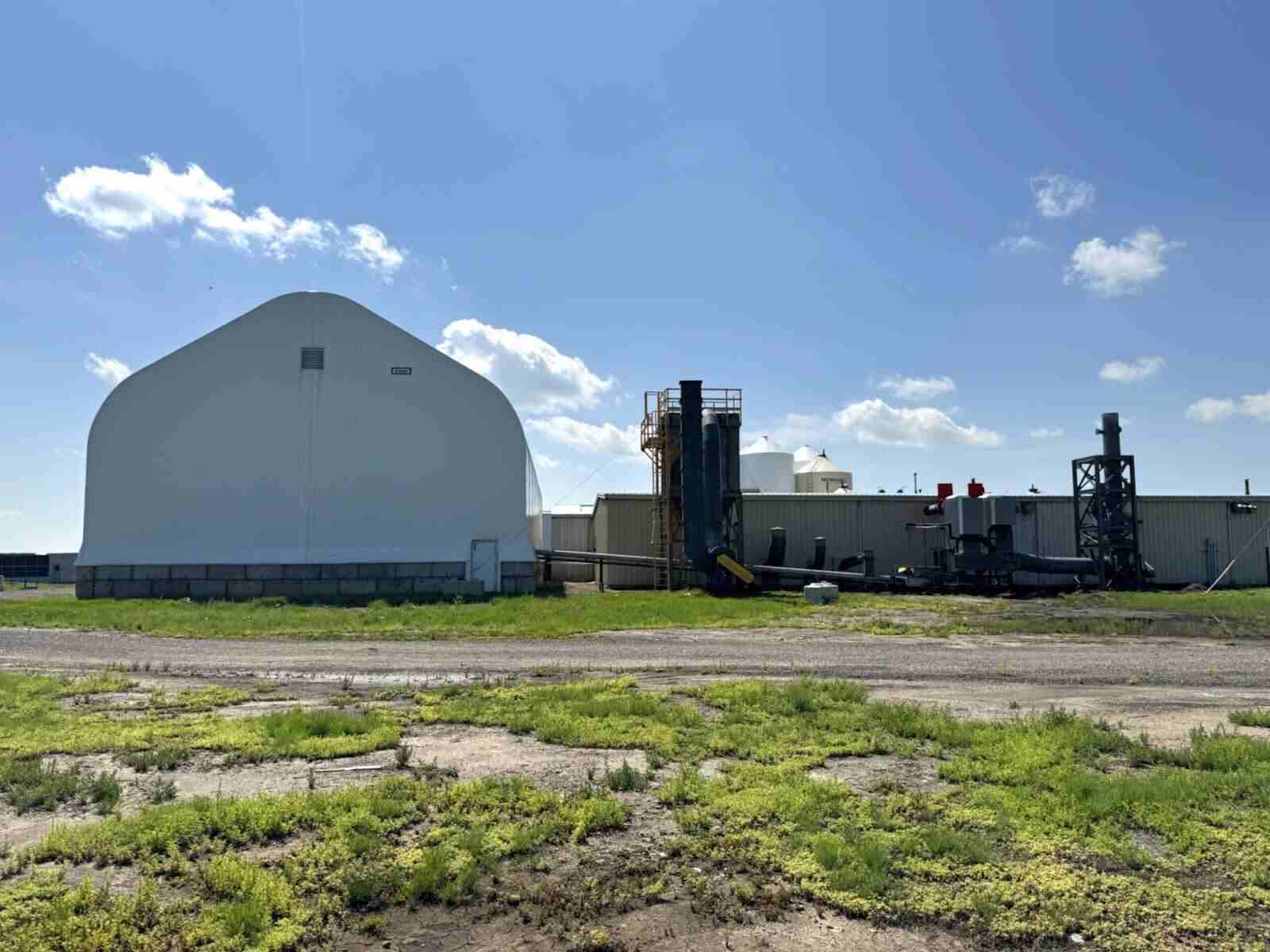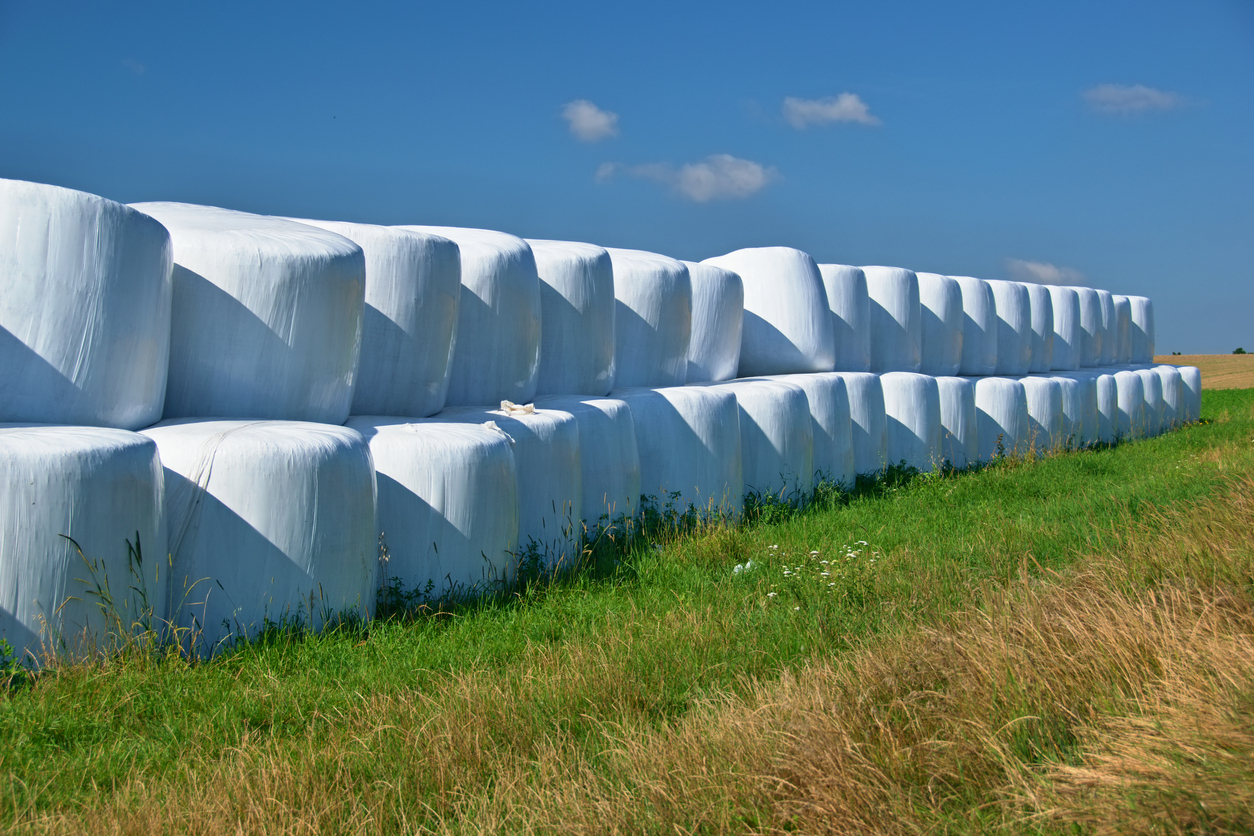The industrial electrical team at Current Group are experts providing food production engineering services. We have helped numerous food processing facilities put together mechanical and automated solutions and offer electrical repair for their existing equipment.
The Problem
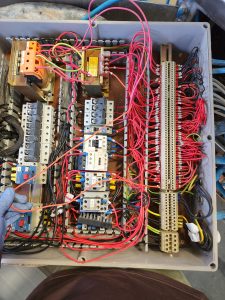 Meat processing facilities use several different types of machines to produce the food that we eat. When these machines stop working the way they’re supposed to, they must be fixed or replaced. However, these machines are expensive to replace, some costing more than $150,000. Sometimes there is nothing mechanically wrong with the machine, but the controls need upgrading due to being too outdated, despite having no schematic or ongoing issues. Owners also tend to look for used equipment to replace equipment or expand a processing line. A food processing customer of Current Group had this issue, and had been using an existing machine until it started giving them problems.
Meat processing facilities use several different types of machines to produce the food that we eat. When these machines stop working the way they’re supposed to, they must be fixed or replaced. However, these machines are expensive to replace, some costing more than $150,000. Sometimes there is nothing mechanically wrong with the machine, but the controls need upgrading due to being too outdated, despite having no schematic or ongoing issues. Owners also tend to look for used equipment to replace equipment or expand a processing line. A food processing customer of Current Group had this issue, and had been using an existing machine until it started giving them problems.
The machine would not operate properly and would stop working in the middle of mixing. It had an old, outdated Central Processing Unit (CPU) that controlled different functions of the machine. Several sensors and limit switches fed back to the CPU that monitored different functions on the machine. These sensors allowed certain machine components to run, and prevented others from running for safety reasons.
To mix meat with this machine, the worker first fills a tub with raw meat and then positions the tub in the mixing machine’s feed arms. The two feed arms then pick up the tub and dump the meat into the machine’s mixing barrel.
The sequence is that the lid must be open, and the barrel must be down before the arms will pick up the tub and dump the meat into the mixer. The problem was some of these functions quit working or didn’t work in the proper sequence.
The Solution
Current Group was called in to troubleshoot why the machine kept stopping during the mixing operation. We found that the CPU and sensors were antique and degraded, and the electrical wiring was questionable. Some of the sensors worked intermittently, so we suggested that instead of spending a day to fix it now only to have to repair it again later, it would be best to replace all the sensors and the CPU with up-to-date technology and a much simpler design.
Before
| After
|
The Services Provided
In the absence of the manufacturer’s manual, Current Group sat down with operations and created a simple mechanical sequence of steps required to mix the meat in this machine. Utilizing our experience with food production engineering, we then designed a control strategy, complete with safety controls, to simplify as much of the process as was practical and safe. We provided a quote to do the work, including new sensors, limit switches, IP69-rated components, and new wiring. Finally, we documented the new automated control system with a concise electrical wiring schematic and labelled each wire and connection for ease of maintenance in the future. When we last checked in with the customer, they confirmed that the machine has not given them any further grief.

